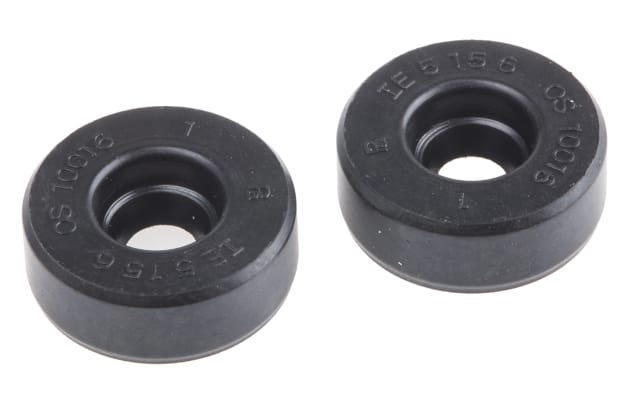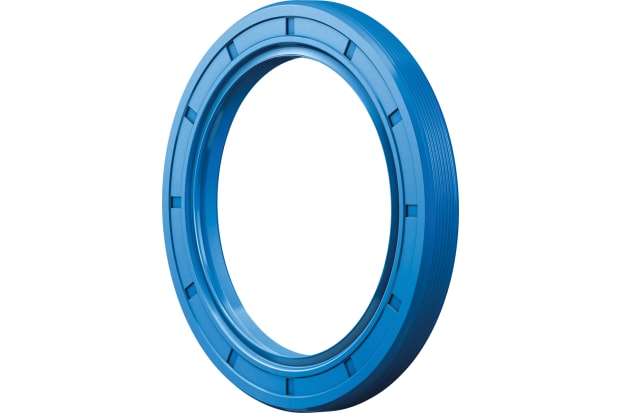- Published 23 Mar 2023
- Last Modified 29 Aug 2023
- 16 min
Everything You Need To Know About O-Rings And Seals

What is an O-ring?
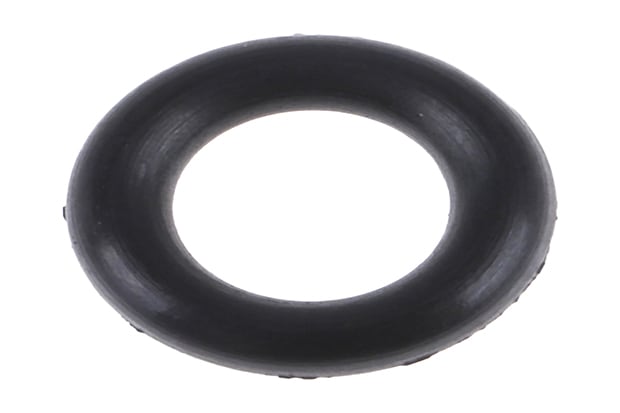
You could argue that the o-ring is a bit of a ‘living fossil’ in terms of manufacturing components. They were first brought to market way back at the dawn of the 20th century - and yet, for all their absolute simplicity and the very basic nature of the role they perform, they’re still incredibly widely used today.
Furthermore, as fast as the worlds of engineering, manufacturing and component design have changed in the intervening 120+ years, o-rings have stayed more or less identical in both form and function. Some of the materials used in the manufacture of o-rings have of course become more high-tech over time, but essentially o-rings remain a beautifully straightforward and reliable solution to a problem that was first brought up more than a century ago.
In this guide, we’ll look at some of the more common types of o-ring seals on the market, and discuss where and when to use them.
How do O-ring seals work?
Whether sold individually, in large wholesale batches or - as is increasingly common - as part of a highly flexible range of o-ring kits, the basic form and role of o-rings are generally the same across the board.
Their name, as implied, simply refers to a classic doughnut or torus shape, and they exist purely to create a better, more leak-proof seal between two other components, with the aim usually being to prevent the unwanted escape of gases or liquids. In this sense, they’re effectively a type of gasket - the main difference being that o-rings are more commonly used in very high-pressure environments, where a normal cork, paper or rubber gasket would likely be prone to failure.
In very basic terms, o-ring seals work by sitting in a groove or channel between two surfaces/components that are going to be mated or pushed together. The o-ring, generally made of some form of elastomer, sits in the join between these two parts, and becomes compressed in order to help form a tight seal.
The more internal pressure is applied to this join, the more the o-ring is distorted inside its groove, which can improve its overall sealing force up to a point - but beyond a certain pressure, or under more dynamic workloads, this can cause failure of the seal. It’s important to get the balance right between o-ring material, size and working environment in order to fulfil the role you need it to perform.
How to use O-ring seals
O-rings are very commonly found in pumps, cylinders, connectors and valves, helping to seal joins between separate parts and prevent leaking of fluids and gases. They’re used with static, dynamic, hydraulic and pneumatic components, making them an especially versatile solution to a very widespread engineering issue.
As noted above, you’d use an o-ring very similarly to the way you’d use any other type of gasket: the elastomer-based circular cross-section sits in a specially engineered groove (the geometry of which is fairly universal), where it becomes compressed between two or more parts once they’re assembled and interlocked. The resulting o-ring seal is both economical and reliable, as well as relatively resilient and easy to maintain/replace when needed.
One of the key strengths of an O-ring-type seal is that after the parts it joins are disconnected and the compression forces acting on it are removed, it will return to its original shape. Over time, repeating this process will start to have an effect on the resilience and uniformity of the materials and the torus shape of the seal, and ultimately the o-ring will need swapping out for a new one if the seal is to remain tight.
Under pressure, the o-ring will shift in its groove towards the lower-pressure side of the seal, forcing it more and more tightly against the inner and outer walls of the gland created between two components. Up to a point, this will create a tighter and tighter seal, but it’s vital not to put more stress on an o-ring than it’s designed to handle, as too much deformation will eventually cause the seal to start leaking again.
What is the difference between static and dynamic O-ring seals?
Static and dynamic O-ring seal design differs in a few key ways. A static O-ring is any o-ring designed to contact with two or more surfaces that do not move relative to one another, whereas a dynamic O-ring is one that helps form a seal between moving parts.
On the whole, static o-rings are created from less robust and hard-wearing materials than their dynamic equivalents. It’s also important that the components being joined together in a dynamic environment are carefully designed and finished, such that they will not abrade, shear and eventually destroy the O-ring positioned between them. This is less of a concern for o-rings used in static applications, as the only stress force they’ll be under is usually compression (to which they tend to be fairly resilient).
While all o-rings require some degree of lubrication in order to perform to optimal levels, dynamic o-rings require heavier and more frequent lubrication (as well as more regular checking, maintenance and replacement) than static versions. Different types of dynamic movements - for example, rotary, reciprocating and oscillating - demand that o-rings be manufactured with different material qualities to perform to the optimal level.
How are O-ring seals made?
The o-ring manufacturing process is relatively straightforward, and the specifics of any given o-ring design and production run generally take into account required quality, quantity, application environment, cost-effectiveness, chemical and pressure compatibility, longevity and lubrication requirements.
O-ring manufacture usually relies on techniques like compression, transfer or injection moulding, machining, or extrusion. There are any number of high-performance materials used in the production of o-rings, ranging from nitrile and silicone rubber to fluorocarbons, metals and more.
In addition to the standard torus-shaped o-rings that are familiar worldwide, they’re also produced in other shapes (square-cut, x-shaped, quad rings, etc) for more specific applications as and when required.
What are O-ring seals used for?
In this section, we’ll look a little more closely at what o-rings do, and some of the applications that they’re very often used for.
O-rings for high-temperature sealing
High-temperature sealing o-rings are, as the name implies, designed to withstand extreme heat while continuing to provide a reliable seal between two surfaces or components.
This makes them ideal for demanding industries and environments such as oil and gas refineries, chemical processing, or any other scenario where a high-temperature seal is required, such as performance transport applications like turbo engines and aerospace engineering.
Best O-ring seal materials for high temperatures
There are a number of popular high-temperature o-ring material choices, including nitrile, hydrogenated nitrile, silicone rubber, polyacrylate and more. Securing the best choice in any given scenario will generally be a balancing act between the specific operating temperature needed, and the most economical material option at that performance point.
For more detail on all types of O-ring materials and designated temperature ranges, feel free to contact our expert support team any time - they’ll be glad to offer further advice and assistance on specific high-temperature seals, materials and applications.
O-ring seal temperature ranges
Again, all industrial o-ring purchases should be carefully planned with direct reference to the specific role and environment the seal is required to perform in. However, as a rough guide to o-ring temperature rating and use limits, some of the more popular materials on sale generally operate within the following sorts of temperature ranges:
- Nitrile: anywhere from -50 C to 120 C
- Hydrogenated nitrile: anywhere from -45 C to 150 C
- Polyacrylate: anywhere from -25 C to 175 C
- Ethylene-propylene: anywhere from -50 C to 135 C
- Chloroprene: anywhere from -40 C to 120 C
- Butyl (petroleum compound): anywhere from -55 C to 205 C
- Fluorosilicone: anywhere from -60 C to 205 C
- Fluorocarbon: anywhere from -25 C to 205 C
O-rings for high-pressure sealing
High-pressure resistance is a common requirement of industrial o-rings, along with reliable performance in high temperature and dynamic environments. For a high-pressure seal to work to optimal levels, o-ring design and manufacture again depends on choosing specific materials for better performance under specific conditions.
O-rings function on the principle that even pressure placed on the (more or less incompressible) o-ring material creates predictable deformation patterns around the perimeter of the gasket in its groove. This means there’s a fairly uniform mechanical stress placed on all contacting surfaces of an o-ring.
Provided the internal pressure from fluids being contained stays below a given O-ring's contact stress rating, it’s largely impossible for leaks to occur, even under high pressure. However, mechanical failure under high pressure can easily cause extrusion or destruction of the o-ring, which is why it’s important to choose the right material for the precise environment you’re looking to use it in.
O-ring seals for engines
An engine o-ring, especially one used in high performance or turbo engines, is a good example of a product that has to be rugged enough in design and material construction to handle various challenging requirements of temperature, pressure and chemical compatibility.
Many basic rubbers and polymers aren’t suitable for use with oils, fuels or solvent-based compounds. For use in an engine, an oil o-ring has to be created specifically from compatible hybrid materials that allow it to maintain crucial o-ring properties (flexibility, incompressibility) while offering more robust resistance to heat, pressure, o-ring leaking and chemical attack than a standard elastomer typically could.
For more advice and information on suitable products to use as engine o-rings, feel free to contact our customer service team through the support pages on our site.
O-ring seals for plumbers
Plumbing o-ring choices are widespread, given the range of materials, sizes and gauges available for use in ducting and pipework applications, as well as to form tight waterproof seals around taps and other fittings. Choosing the best product for the job depends on finding the correct size and shape for the specific role you have in mind.
Food Grade O-ring seals
Food-grade o-rings have been manufactured to more exacting standards of material composition, such that they’ve been officially declared ‘food safe’ for use in the production and preparation of meals, beverages and dining products.
Best food grade O-ring seal materials
An approved food-grade o-ring must only consist of the material(s) declared and approved as food safety compliant in the country of manufacture/sale. In the UK, this applies to natural and synthetic rubbers, elastomers and polymers.
To achieve food grade approval, an o-ring manufacturer must also take into account extractable ingredients/compounds if the seal is to be used in direct contact with aqueous, acidic or fatty foods and drinks. Some common food-safe o-ring materials include EPDM, fluorocarbon, nitrile, neoprene and silicone.
O-ring seals for CO2
Carbon dioxide often presents an issue for many types of o-rings, as softer materials have a tendency to absorb the gas over time and swell up. This can lead to an unreliable seal in the short term, and over time the CO2 will actually cause the o-ring to start to break down from within.
Some popular choices for use in applications where the o-ring will have extended CO2 contact include polyurethane, PTFE, nitrile, and fluoroelastomers. However, the best choice will always depend on the consideration of other environmental or application factors.
O-ring seals for aircrafts
Aircraft o-rings and aerospace o-rings generally need to be highly chemically resistant, and able to operate within a wide range of temperatures and pressures in order to keep an aerospace craft’s powertrain running cleanly, efficiently and smoothly. Typical applications include fuel cap gaskets, fuel system o-rings, and valve cover seals.
Common elastomers for use in aerospace-type applications include nitriles, ethylene-propylene, fluorosilicones and more. Because there are so many different sizes and gauges of o-ring distributed throughout most aircraft engines and systems, most sales for aerospace and aeronautics are through bulk orders of multi-size o-ring kits.
Different O-ring seal materials
As we’ve seen in some of the above sections, there are many different o-ring materials in widespread use, and picking the right sort for the precise task in question is very important if you want it to perform reliably over time. In this section, we’ll take a quick look at the various different o-ring material types.
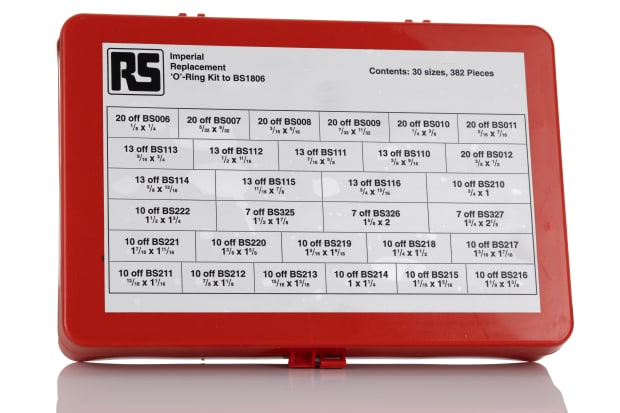
Viton® O-ring seals
Viton® o-rings are a popular alternative to the widely-used nitrile seals. O-ring kits from Viton® suppliers are actually made from fluorocarbon rubber, making them excellent for withstanding higher temperatures and offering stronger chemical resistance (petroleum oils, acids, silicone fluids and gases) than most basic nitrile o-rings can cope with.
Viton® O-ring seal temperature range
In general, depending on a number of factors including grade of o-ring and precise application, the Viton® seal working temperature range is held to be between -26 C and +205 C, although they can withstand higher temperatures for short periods.

Nitrile O-ring seals
Nitrile o-rings are a popular type of rubber seal gasket that’s used in a wide range of applications and environments - they’re broadly seen as a general-purpose o-ring type, with reasonably resistant sealing properties against water, gasoline, petroleum oils, crude oil, propane and some hydraulic fluids.
Nitrile rubber o-rings are a tough and fairly robust type of seal that holds up well in physically demanding roles. Phosphate ester hydraulic fluids, brake fluids and halogenated hydrocarbons are damaging to nitrile, and it’s not the best choice for high temperature or pressure demands
Nitrile O-ring seal temperature range
The nitrile o-ring temperature range is usually anywhere from -50 C to 120 C
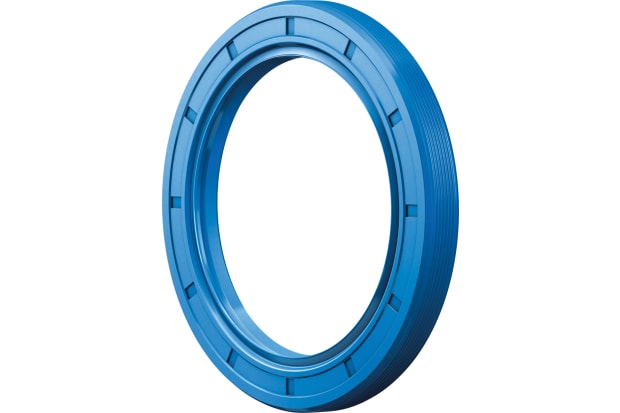
Rubber O-ring seals
Rubber o-rings are perhaps the most common type, serving an enormous array of purposes and functions in less specific or demanding applications than some of the higher-tech variants seen in heavy industrial environments.
O-ring rubber seals are available in a very wide range of gasket and o-ring types, including natural rubber as well as a large array of other elastomer and compound products.

Silicone O-ring seals
Silicone o-rings are very much a gasket/sealant industry standard today. Silicone rubber compounds typically offer very good resistance to ozone, acids, water, and decent resistance to weathering and heat, making them great for outdoor applications. They offer little shear resistance or tensile strength, although silicone seals made from compound grades with much better tear resistance than standard silicones are often offered by manufacturers.
Standard silicone o-ring temperature range is generally quite wide, from very low to reasonably high. Typical operating ratings on most UK silicone o-ring kits and products run anywhere from about -50 c to 200 c.
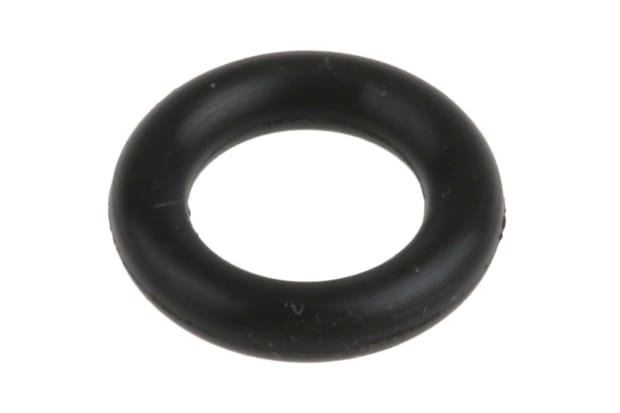
Fluorocarbon elastomer O-ring seals
Fluorocarbon o-rings are a subgroup of elastomer seals usually known as Viton®, as detailed in a separate section above. They offer good resistance to high temperatures (up to 210 C), but are prone to failure below -15 C in dynamic applications when they tend to become too stiff and inflexible.
Resistance to petroleum oils, acids, silicone fluids is good, and Viton® is highly resistant to oxidation, UV damage, fungus, ozone, oils, and petroleum-based lubricants.
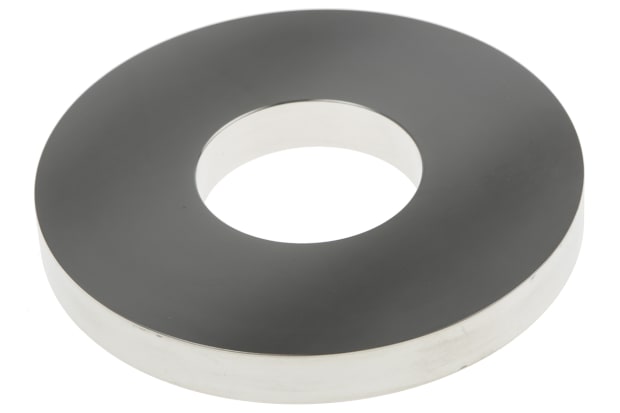
Metal O-ring seals
Metallic o-rings and metal o-ring seals are often found where an extra hard-wearing gasket is required in high temperature or high-pressure components, in heavy machinery and industrial sectors. As such, they’re considered an ‘extreme’ performance o-ring sealing solution, designed to offer optimal reliability under, especially tough conditions.
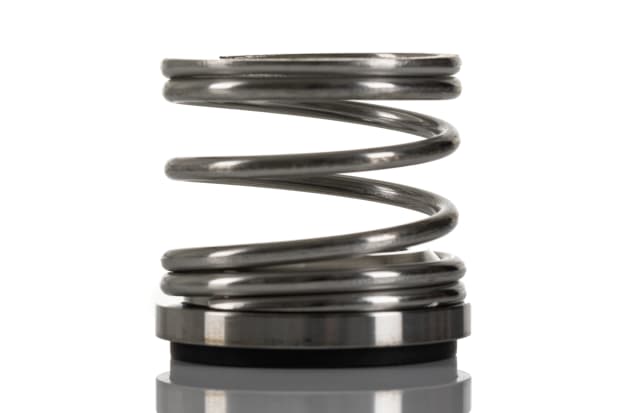
Stainless steel O-ring seals
Metal O-rings are typically created from tubing, which very often contains stainless steel. They’re commonly used due to the inherent resilience of stainless steel o-rings, which means seals can spring back promptly once pressure is reduced. They provide excellent and robust sealing properties in static applications but are often unsuitable for dynamic environments; metal o-rings are best when used as standard gaskets.
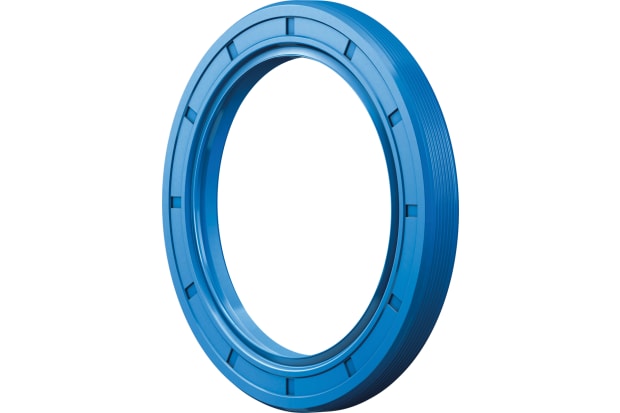
NBR O-ring seals
Nitrile - also known as NBR - is probably the most widely used elastomer in the seal industry at the time of writing. NBR o-ring kits and NBR seals are found in a staggering number of applications. Finding the correct nitrile o-ring for the job will depend on getting the right grade to stand up to the task at hand.
When an o-ring compound contains the standard 32% nitrile content, it is said to be made from ‘medium nitrile’. At 50% or more it becomes a ‘high nitrile’ product, intended for use in hydrocarbon applications, while below 18% is considered ‘low nitrile’ for use in very low-temperature systems.
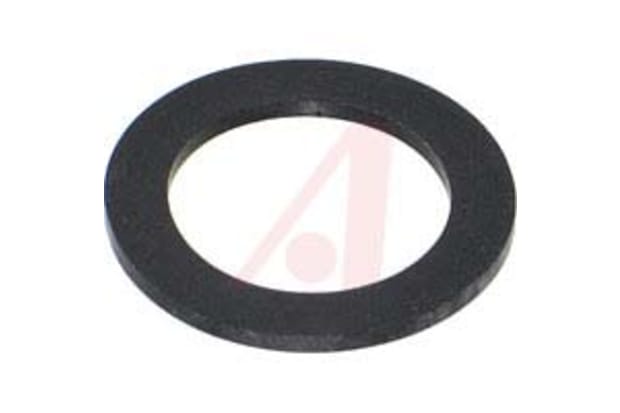
NBR 70 O-ring seals
NBR 70 o-rings are ideal for uses where oil resistance and low-temperature functionality are required - as such, they’re often found in military applications and automotive or aircraft fuel systems. NBR 70 o-rings are also suitable for food-grade use once compounded appropriately.
NBR O-ring seal temperature range
Working NBR o-ring temperature range is anywhere from about -35 c to 120 c.
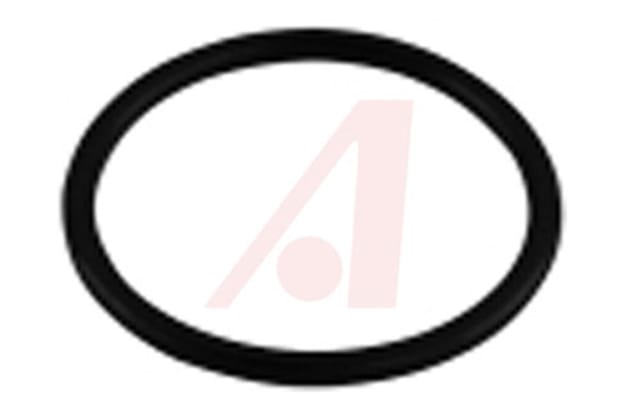
Buna-N O-ring seals
Like NBR, Buna-N o-rings are also nitrile products. Like their fellow elastomers, they’re widely used in many industries where they’re prized for excellent abrasion and tear resistance, suitability for use with some solvents, and for being considerably cheaper than fluoroelastomers.
Potential drawbacks of NBR, Buna-N and other nitrile o-rings include limited ability to withstand particularly high temperatures, and weaker ozone, UV and weather resistance than many other o-ring types.
Product spotlights
Use one of the links below to view our top ranges of O-rings on the RS website
Related links
- Gaskets & O-Rings
- Parker O-Rings Kit Contents O-Rings And Seals
- Everything You Need To Know About Thermal Imaging Cameras | RS
- RS PRO Metric O-Ring Kit Viton®, Kit Contents 510 Pieces
- Seal & O-Ring Kits
- O-Ring Tools
- Parker Seals & O-Rings FPM Seals And Retaining Rings
- Parker Seals & O-Rings NBR Seals And Retaining Rings
